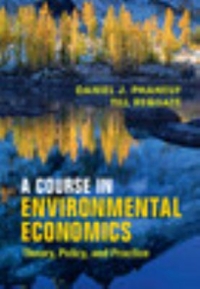The data file evans_wage is available on the website, along with descriptions of the included variables. In
Question:
The data file evans_wage is available on the website, along with descriptions of the included variables. In contains information on hourly wages for a sample of individuals, along with variables describing workers’ education, gender, age, average hours per week and weeks per year, and race. In addition, the fatality risk for the worker’s industry, measured in deaths per 10,000 workers, is available.
Finally, there is a variable indicating the person’s occupation from among 16 possible categories.
(a) Estimate a semi-log hedonic wage model, including covariates for age, education, race, gender, fatality risk, and the full set of occupational fixed effects. Do you find evidence of a compensating wage differential for risk? Calculate the VSL implied by your estimates.
(b) Describe any threats that might exist to the validity of your estimate, using the discussion in the chapter and any other sources.
How does your point estimate (in 2004 dollars) compare with other estimates in the VSL literature?
The data file also contains variables for the person’s height (in meters) and weight (in kilograms). A person’s body mass index (BMI) is defined as weight divided by height squared. A BMI ≥25 is considered overweight.
(c) Write out a model that allows you to test the hypothesis that an overweight person has a different marginal value of risk reduction than someone with healthy weight. What direction do you think the difference will be, and why? Estimate the model and test the hypothesis. Are the results consistent with your intuition? Calculate the average VSL for overweight people in the sample.
(d) Discuss how the exclusion of an age/fatality risk interaction might lead you to misinterpret your findings in (c).
Step by Step Answer:

A Course In Environmental Economics
ISBN: 9781316866818
1st Edition
Authors: Daniel J Phaneuf, Till Requate





